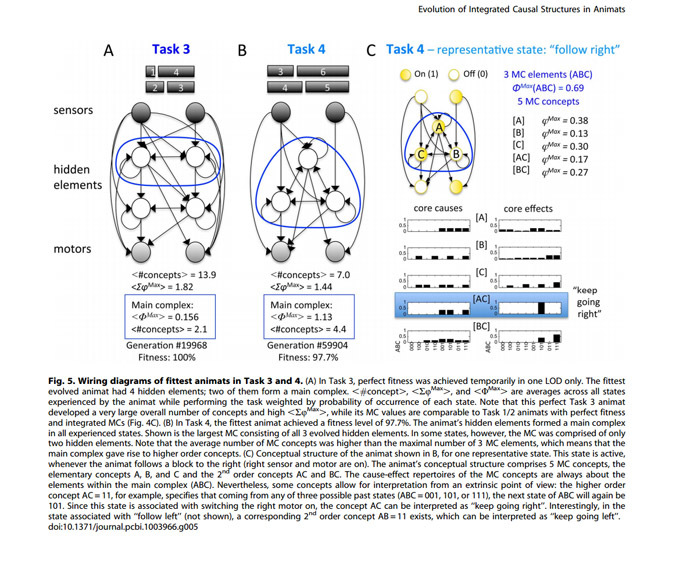Brain evolution prompted by complex, rich environments – study

US neuroscientists have created a 60,000-generation colony of simple programmed critters keen on varieties of a basic “Tetris” computer game, effectively proving that an artificial brain evolves only when facing complicated tasks.
Little programmed animated critters, called “animats,” are mastering an analogue of an old-fashioned block-catching computer game under the watchful eyes of researchers at the University of Wisconsin-Madison and Michigan State University, who recently published their study in PLOS Computational Biology journal.
The rudimentary neural system of the critters is composed of eight nodes – two sensors, two motors, and four internal computers – used to coordinate sensation, movement and memory. The computer code became the animats’ “DNA,” which allowed mutations.

Playing the video game, the critters learn to predict where the falling blocks would land – while undergoing a process of selection of the most effective players by the scientists, and replication, if successful. At the end of 60,000 generations, the animats had developed sophisticated neural networks, allowing them to not to fail while playing more “professional” versions of the game.
“This shows that by adapting to a more complex environment, the organism itself becomes more complex,” Larissa Albantakis, the study's lead author, said in a statement. “In principle, integration in the brain is not necessary if the brain could just keep growing indefinitely, but in reality, there is an energetic cost to big brains. Integrated neural networks are just more economic, because they can implement the same number of functions with fewer nodes.”
In the study, the brain was limited in size to the eight nodes, so the complexity was reached with a strategy of increasing integration between sensor inputs and memory. The scientists regard it as an answer to the question of the brain evolution.
Albantakis explained that high-complexity systems evolve only in a “rich environment [that] is a driving force towards developing both complexity and integration,” referring to the necessity to complicate the game in the course of generational change.
However, the co-authors from Michigan State University, Chris Adami and Arend Hintze, have developed animats with larger brains. They are able to master mazes and recognize handwritten numbers.












